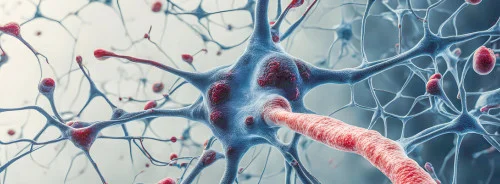Bladder cancer (BCa) is one of the most prevalent malignancies of the urinary system. A crucial distinction in BCa is whether it is muscle-invasive (MIBC) or non-muscle-invasive (NMIBC), as this classification significantly impacts treatment strategies and patient outcomes. Currently, invasive biopsy procedures and magnetic resonance imaging (MRI) are commonly used to assess muscle invasion, but these methods have limitations. In recent years, advancements in imaging techniques such as Dual-energy computed tomography (DECT) and radiomics have provided non-invasive alternatives for evaluating the muscle invasion status of bladder cancer. This article explores the innovative use of multi-DECT image-based radiomics in intratumoural and peritumoural regions for predicting muscle invasion in bladder cancer, offering a promising tool for preoperative evaluation.
Intratumoural and Peritumoral Radiomics in Bladder Cancer Prediction
Radiomics is a technique that extracts quantitative features from medical images, transforming imaging data into valuable biomarkers that can be used for disease prediction and assessment. Most radiomics studies have historically focused solely on the intratumoural region to analyse tumours. However, recent studies have suggested that the peritumoural region—surrounding the tumour—also contains important biological information. In bladder cancer, the invasive characteristics of the tumour may extend beyond its visible boundaries, making the peritumoural region crucial for assessing muscle invasion. By combining features extracted from both the intratumoural and peritumoral areas, radiomics can offer a more comprehensive view of tumour behaviour and invasion.
In the study described in the document, a model incorporating radiomic features from both intratumoural and peritumoral regions was developed using DECT imaging. This model was specifically designed to preoperatively predict whether bladder cancer invades the muscular layer, helping to guide treatment decisions. The combined radiomic approach demonstrated superior predictive performance compared to models using only intratumoural or peritumoral features, highlighting the added value of analysing the tumour's surrounding area.
Multi-DECT Imaging and its Role in Predicting Muscle Invasion
Dual-energy computed tomography (DECT) is a powerful tool for imaging bladder cancer, capturing both anatomical and functional information from a single scan. DECT generates various image types, including virtual monochromatic images (VMI) and iodine-based material decomposition (IMD) images, which can be used to enhance the visualisation of tumour characteristics. Specifically, VMI images at 40 keV offer excellent soft tissue contrast, while IMD images quantify iodine content within the tumour, reflecting blood supply and tumour metabolism.
The study found that normalised iodine concentration (NIC) extracted from IMD images was a strong independent predictor of muscle invasion. Additionally, models incorporating radiomic features from 40 keV and IMD images outperformed others, as these images offered a clearer representation of both tumour morphology and vascularisation. Integrating DECT-based radiomics with conventional clinical imaging enhances the diagnostic capabilities for preoperative assessment of bladder cancer.
Development of a Predictive Nomogram
A nomogram was developed to further improve predictive accuracy by combining the DECT model and the optimal radiomics model derived from intratumoural and peritumoral features. A nomogram is a graphical tool that combines multiple predictive factors to provide a personalised risk assessment for each patient. In this case, the nomogram incorporated both the NIC from DECT imaging and the radiomic signature from the combined intratumoural and peritumoral regions.
The results showed that the nomogram provided the highest predictive accuracy, sensitivity, and specificity for distinguishing between MIBC and NMIBC. The nomogram's ability to integrate both imaging biomarkers and radiomics data allowed for a more nuanced prediction of tumour invasiveness. Clinically, this means that physicians could use the nomogram to make more informed treatment decisions, reducing the likelihood of overtreatment or undertreatment and improving overall patient outcomes.
Conclusion
Combining DECT-based radiomics with conventional imaging techniques offers a novel and non-invasive method for preoperatively predicting muscle invasion in bladder cancer. Analysing intratumoural and peritumoral regions provides a comprehensive assessment of tumour behaviour, which is crucial for determining the appropriate treatment strategy. Developing a predictive nomogram further enhances this approach, allowing for personalised and accurate risk assessment. As imaging technologies continue to evolve, integrating radiomics into routine clinical practice holds great potential for improving the management of bladder cancer and other malignancies.
Source: Academic Radiology
Image Credit: iStock
References:
Hu M, Zhang J, Cheng Q et al. (2024) Multi-DECT image-based intratumoral and peritumoral radiomics for preoperative prediction of muscle invasion in bladder cancer. Academic Radiology.






